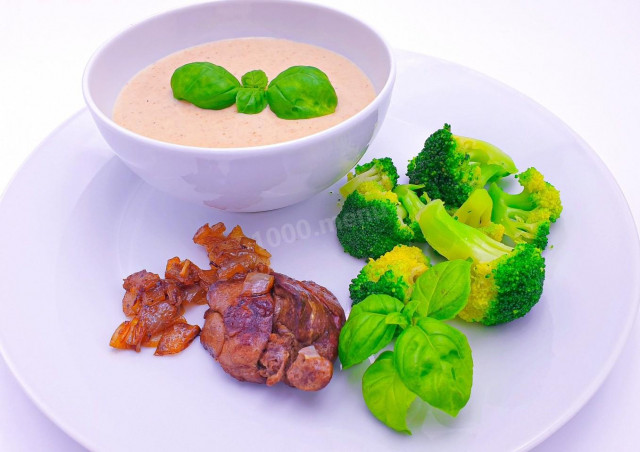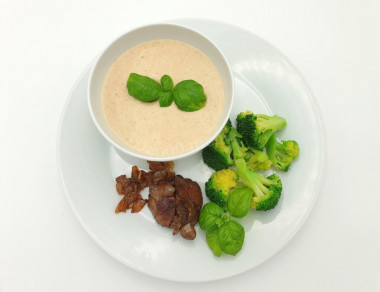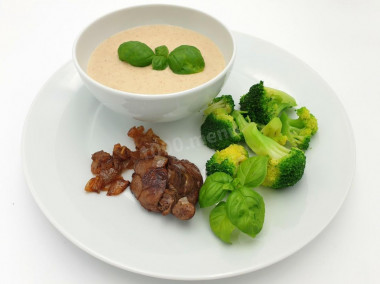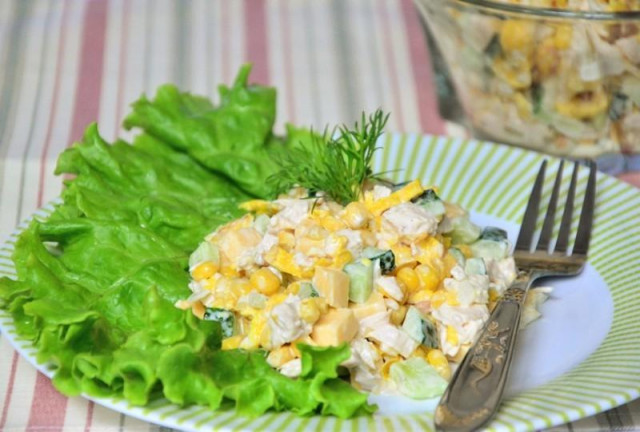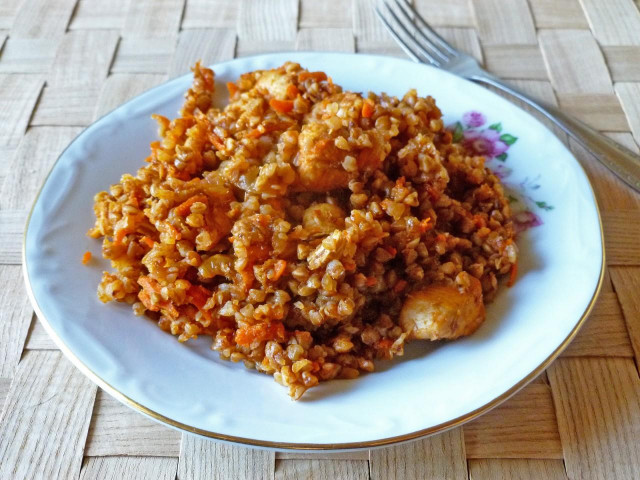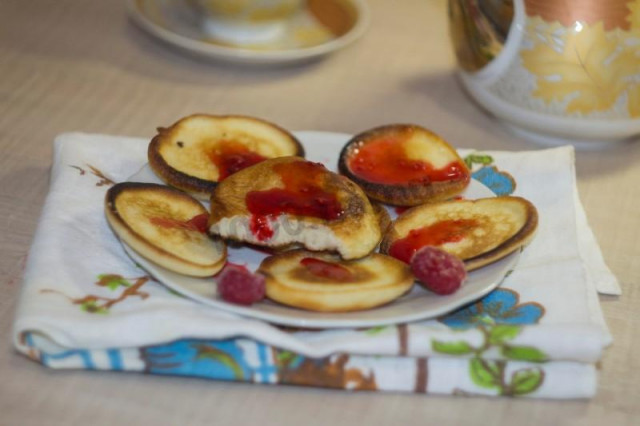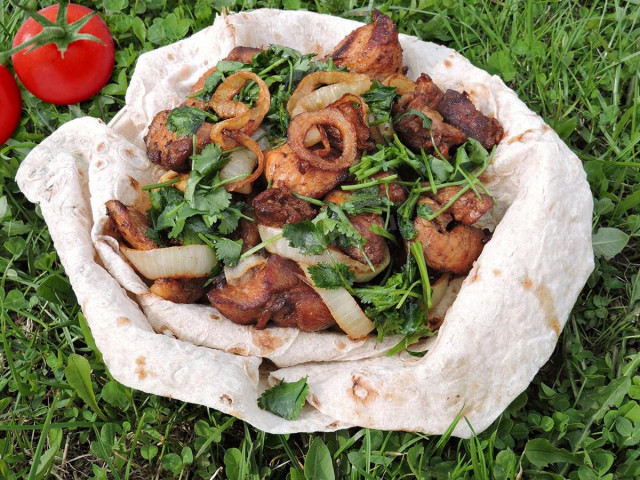Composition / ingredients
Step-by-step cooking
Step 1:
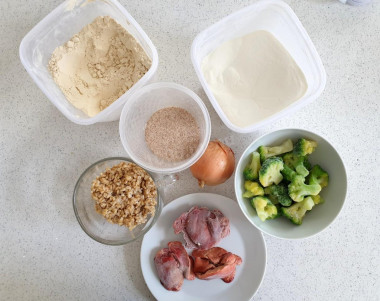
Prepare the ingredients according to the list. Whole oats are used in the recipe, so it is better to boil them in advance (you can store them in a ready-to-use form in the freezer, packaged in small portions, and, as necessary, take them out and defrost them). My broccoli and liver are frozen (you can take fresh ones), I defrost them in the microwave, the liver before cooking, and broccoli 3-5 minutes before serving, so as not to cool down.
Step 2:
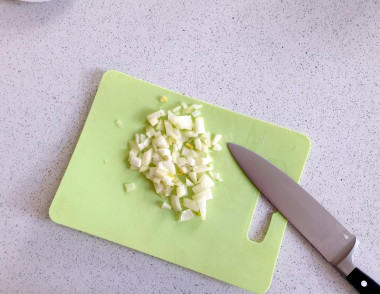
Wash and peel the onion. Cut into small cubes, or half rings - as you like. Half of a medium onion was enough for me. The other half can be put with a slice on the bottom of a plastic container, closed with a tight lid and put in the refrigerator. To avoid watering your eyes when slicing onions, moisten the knife with water.
Step 3:
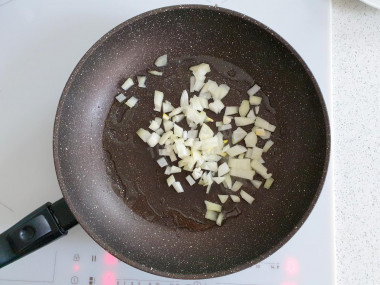
The liver can be used fresh, but if you use frozen, defrost it in advance (put it out of the freezer for a few hours and leave it to defrost in the refrigerator, or use a microwave oven - see the instructions for your device). Put the pan on a high heat to warm up, brush with any oil with a high smoking temperature, then reduce the heat to medium and put the onion. Lightly fry (until light transparent).
Step 4:
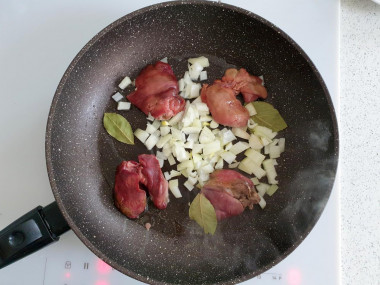
Add thawed (or fresh) liver. Fry for about 7-10 minutes, turning the pieces periodically and stirring the onion. At the end, you can cover it with a lid for a couple of minutes so that the liver is certainly cooked.
Step 5:
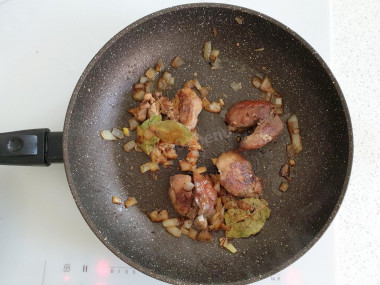
How to check if the liver is ready? Lightly pierce it with a knife. If the red juice is not released, then the liver is ready. If you use frozen broccoli cabbage, like me, then now is the best time to put it in the microwave to defrost (maybe you don't know how to defrost broccoli properly, then read the instructions for your microwave, since the appliances often have different power and functionality).
Step 6:
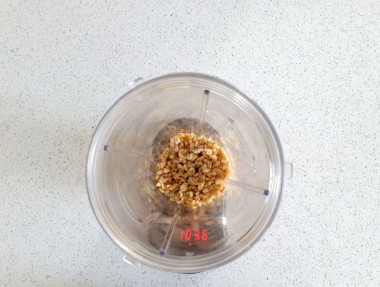
Prepare the sauce. Put the blender bowl on the scale. Fill in the cooked oats. Instead of oats, you can use boiled pearl barley or brown rice (also prepared in advance).
Step 7:
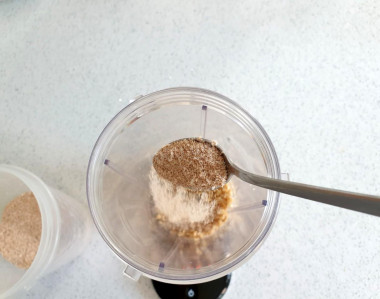
Add psyllium to the oats. It will thicken our sauce. A teaspoon with a large slide was enough for me, but it may need a little more or, conversely, less. It all depends on how thick the sauce you want to get and on the quality of the product. According to my observations, psyllium works more readily in hotter water, but you should not use water above 65-70 degrees.
Step 8:
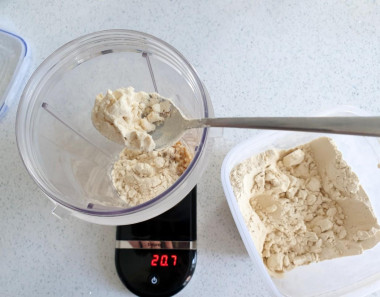
Measure soy protein. The recipe contains soy isolate, as it is characterized by a high protein content and excellent digestibility.
Step 9:
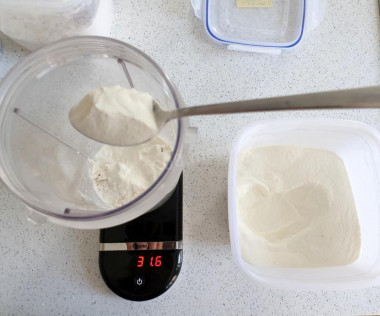
Add whey protein. In this sauce, I used two types of proteins, as they differ in amino acid composition and action. In such a tandem, proteins complement each other perfectly. But it should be borne in mind that whey protein may not be suitable for people with lactose intolerance, or try whey isolate, where the fat and lactose content is minimal.
Step 10:
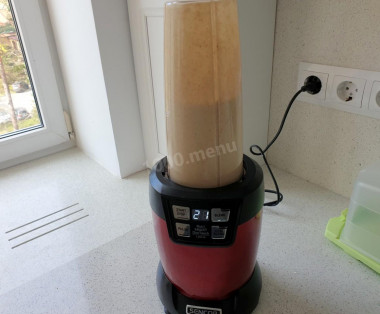
Next, add 20 grams of olive oil, salt and spices to taste to the blender bowl (I added a pinch of black and red pepper), as well as Teriyaki sauce for piquancy. Fill the contents with hot water (about 60 degrees), mix everything in a blender. A conventional immersion blender is also suitable for these purposes. During the mixing process, keep an eye on the consistency of the sauce. If it is too thick, add 2-3 tablespoons of water. If too liquid, add a little psyllium
Step 11:
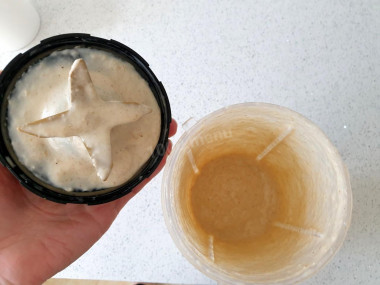
The sauce turned out to be sour cream of medium density.
Step 12:
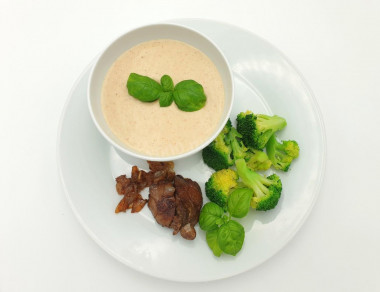
Put the liver, broccoli and sauce on a platter, garnish with basil leaves. The balanced dish is ready! Bon appetit!
Whey protein is made from whey, so it contains a small amount of lactose (depending on the degree of purification, it may be more or less. The lowest lactose content in whey protein isolate). It is better for people with its intolerance to give up the use of this type of protein. Casein should also be treated with caution.
Instead of frozen broccoli, you can use fresh. In this case, start cooking it immediately, so that during the preparation of the liver and sauce, it has time to cook.
How to diversify a dish? Broccoli can be replaced with any other vegetables (frozen or fresh) that you like best: spinach, string beans, bell peppers, green peas or a mixture of different vegetables.
For variety and a significant reduction in cooking time, I recommend preparing various cereals in advance: boil whole-grain oats, barley, barley, wild rice or its mixture with red and ordinary rice, and then pack in small portions and freeze. As necessary, defrost one or another cereal, making the dish a little different in taste.
Caloric content of the products possible in the composition of the dish
- Onion - 41 kcal/100g
- Oats - 316 kcal/100g
- Broccoli - 33 kcal/100g
- Fresh basil - 27 kcal/100g
- Dried basil - 251 kcal/100g
- Bay leaf - 313 kcal/100g
- Salt - 0 kcal/100g
- Water - 0 kcal/100g
- Olive oil - 913 kcal/100g
- Chicken liver - 140 kcal/100g
- Protein - 375 kcal/100g
- Teriyaki sauce - 89 kcal/100g
- Psyllium - 42 kcal/100g

